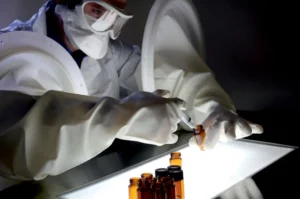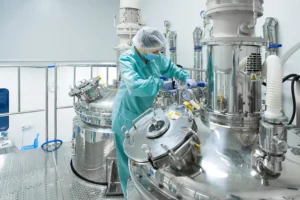BIOLOGICAL INDICATORS – AN OVERVIEW
Sterilization is critical for the pharmaceutical industry and different medical facilities around the world as sterilization provides protections and detects contamination, prevents cross-contamination and improves experiment outcomes.
The biological indicator monitors the sterilization process and equipment to provide guarantee and ensure the procedure, process and equipment are working as required to disinfect and sterilize the pharmaceutical equipment. This makes the biological indicator one of the most critical components used in the sanitization procedure.
The biological indicator monitors the sterilization process and equipment to provide guarantee and ensure the procedure, process and equipment are working as required to disinfect and sterilize the pharmaceutical equipment. This makes the biological indicator one of the most critical components used in the sanitization procedure.
June Enterprises provides below a complete overview regarding the benefits of biological indicators and their importance for the process of the sterilization process.
The Sterilization Monitoring Process
Sterilization is a process that kills microscopic bacteria and pathogens in the given environment and further aids in other pharmaceutical processes. It is also called as a decontamination process. There are numerous procedures utilized for sterilization, the most well-known are ethylene oxide and steam. Sterilization strategies vary, however all serve a similar function – to wipe out any microscopic organisms. As one would expect, all types of cleansing must be checked to ensure that the entirety of the potential pathogens is effectively being destroyed. The disinfection procedure must be observed to guarantee unwavering quality and adequacy, and preparing staff must make an immediate move if any alerts are raised during sterilization.
Difference between chemical, biological and mechanical monitoring work
• Difference between chemical, biological and mechanical monitoring work
Chemical monitoring describes the process of using special indicators like strips, tabs, and tapes. They contain chemicals that produce a change in color as a response to high temperatures. In sterilization, Chemical indicators have demonstrated to be truly solid in confirming that the conditions required for disinfection have been met, and the outcomes show up on the marker promptly following the cycle.
Mechanical (physical) monitoring describes the observation of the components of the sterilizer as part of routine quality control exercises. For each load, the user checks the measures, showcases and unit cycle clocks. Variations in these readings indicate that something isn’t right with the sterilizer.
Biological indicators are used in the medical sterilization setting to quantify the adequacy of the sterilization procedure and assurance the lethality of the cycle. Biological indicators are sometimes referred to as living indicators. The biological indicator is viewed as the best quality level of disinfection observing. At the point when utilized routinely, they offer the highest sterilization quality assurance in the procedure.
The play of Biological Indicator in the Sterilization process
Biological indicators are expert sterilization monitors and are placed in small containers to perform the procedure. They are the foremost mechanism of sterility evaluation for any medical or pharmaceutical environment through the use of some of the most resistant microorganisms. The resistance of microorganisms
aided them to integrate and conduct the sterilization process.
These indicators help to monitor whether the necessary conditions were met to kill a specified number of microorganisms for a given sterilization process.
It is also said, the present pharmaceutical’s achievements and outcomes would not have been possible without the indicators as they hold the ability to eliminate the pathogens for complete disinfection with providing strong quality assurance. This proves how significant is the biological monitoring methodology and thus, the biological indicator itself.
These indicators help to monitor whether the necessary conditions were met to kill a specified number of microorganisms for a given sterilization process.
It is also said, the present pharmaceutical’s achievements and outcomes would not have been possible without the indicators as they hold the ability to eliminate the pathogens for complete disinfection with providing strong quality assurance. This proves how significant is the biological monitoring methodology and thus, the biological indicator itself.
• The Importance of Biological Indicators in the pharmaceutical process
A specialist from the Association for the Advancement of Medical Instrumentation (AAMI) depicts biological monitoring as “the cornerstone of your sterilization quality assurance program.” Biological indicators reveal to us whether the sterilization cycle has sufficiently eliminated microbial contaminants in a proof-positive way that can’t be accomplished by chemical and mechanical monitoring alone.
For sterilization, the biological indicator is beneficial, day by day their utilization is one of the best approaches to spot early breakdowns or blunders, significantly diminishing the further risk.
It can be said that no other monitoring process such as chemical or mechanical is as accurate as compared to the biological indicator. To know more about the types and indicators of significance, feel free to contact us anytime.
It can be said that no other monitoring process such as chemical or mechanical is as accurate as compared to the biological indicator. To know more about the types and indicators of significance, feel free to contact us anytime.




